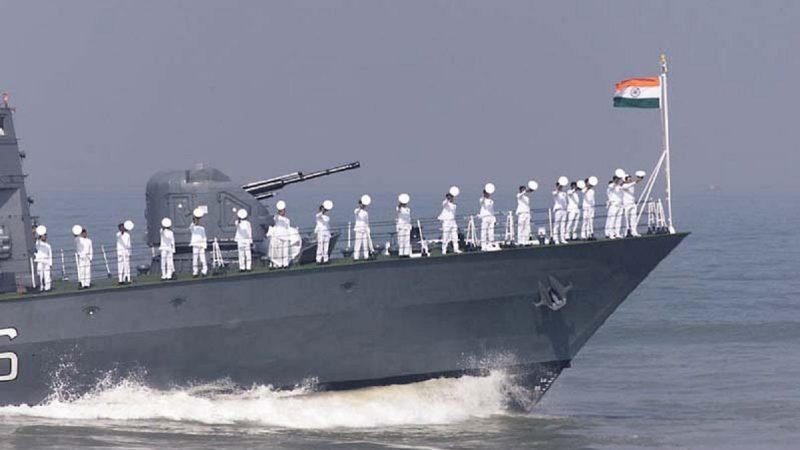India’s unofficial strategic “necklace of diamonds” could be a game-changer in foreseeable future

Introduction
“China is not a superpower, nor will she ever seek to be one. If one day China should change her colour and turn into a superpower, if she too should play the tyrant in the world and everywhere subject others to her bullying, aggression and exploitation, the people of the world should identify her as a social-imperialism, expose it, oppose it and work together with the Chinese people to overthrow it.”
–Deng Xiaoping, Former Chinese Leader

Growing Chinese assertiveness across Asia in terms of land and water conflicts as well as across the world by misusing its economic might has poised a great threat to the civilized world. The above-cited quote of Deng correctly predicted the behaviour of a civilization state and not a nation-state. The modus operandi of Chinese rulers, irrespective of any ideology has been dominating in a character who always wanted to rule, if not the entire world then East Asia at least. Dynasties in Peking and its self-proclaimed authority developed the concept of ‘tianxia’ meaning everything belonged to the great Chinese civilization. Tianxia compelled once many modern Southeast Asian countries to be the tributary states of ancient China ultimately made Pax Sinica possible in the Southeast Asian region. Though everything has been changed, be it China or the entire globe, the hegemonic mindset, particularly of the Han Chinese, remains intact. PRC’s unacceptable assertive advance in multiple fronts with whom she shares the borders is another matter of concern. With the help of myth and irrelevant historical reference, the way they jeopardize the established peace in Asia has to be averted which India is doing across the Line of Actual Control. Chinese unfair resentment towards India had crossed all limits the day India refused to be a part of its Belt and Road Initiative and since then the Politburo in Beijing revamped its ‘Isolating The Main’ approach of Premier Zhou Enlai. Under this approach, China is trying to encircle mainland India by stepping up economic and military activities in South Asia. The pivotal player of this initiative is undoubtedly the People’s Liberation Army Navy who had already started intimidation in the Indian Ocean Region.

China’s Nine-Dash Line and String of Pearls
It is a well-known fact that the sea route of the South China Sea will soon overtake the US- Europe Atlantic trade water route to be the busiest sea trade route in the world in coming days. The overlapping claims of waters and islands by many adjoining countries made the entire region distinctive in nature. Till the year of 2000, each adjoining country in the South China Sea was busy in constructions at their own islands within their exclusive economic zones abiding by the rules of the United Nations Convention on the Law of the Sea (UNCLOS). But the prevailed peace was sabotaged when Beijing started staring at the region and repeatedly asked its counterparts to respect Nine-Dash Line, a line claims the lion share of South China Sea, vaguely drawn and interpreted both by Republic of China and People’s Republic of China almost in the same way with minor differences. It was the Republic of China, who first came up with the idea of Eleven Dash Line, giving an account of its old history but later reduced to Nine-Dash Line, gave up its claims in the Gulf of Tonkin.
China had been a passive player in the region for almost fifty years but suddenly woke up and started making illogical claims under her so-called ‘Great Wall of Sand’. Though China’s repeated claims were being contested by the neighbouring littoral states particularly on the question of controlling island chains of Paracel and Spratly, PLA Navy has been working aggressively with the help of Beijing’s economic might as well as its diplomatic clout, transforming its already built artificial islands into military bases. China’s southernmost Hainan island, where Beijing has reserved its second strike nukes will be strategically aligned with the occupied Paracel and Spratly archipelagos if the construction of artificial islands are being further increased in the major parts of the sea.
The assertiveness of China has even been expanded to the other side of Malacca Strait and here the unofficial ‘String of Pearls’ theory evolves. China has financially tamed the small nations of the Indian Ocean Region by forcing them to be a part of its debt trap policy. The worrying part is most of the worst ever victims of debt trap share their borders with India or in close proximity of Indian air space. Sri Lanka’s Hambantota port, Pakistan’s Gwadar port, Myanmar’s Coco Islands, Maldives’s Marao Atoll is among the most concerned strategic locations, where Hambantota and Gwadar has already been given to Beijing on lease to get rid of debt trap by Sri Lanka and Pakistan. The most dangerous situation for India may arise from PLAN’s Djibouti naval base where the military formation is clearly visible and that should be under close Indian watch in the region.

Indian Counter Strategist
“The Indian Ocean Region had become the strategic heartland of the 21st century; dislodging Europe and North-East Asia which adorned this position in the 20th century. The developments in the Indian Ocean Region were contributing to the advent of a less Western-centric and a more multi-polar world”
–Donald L. Berlin, Head of Security Studies, Asia Pacific Centre for Security Studies, Honolulu, Hawaii
The cited quote is matching with the current scenario in the Indian Ocean Region and it has been gradually becoming one of the most militarized sea zones in the world. Latest Chinese assertion in the Indian Ocean Region to secure its oil vessel routes through different choke points instigating different relevant and traditional powers of the region to be more careful. PLAN’s consistent violation of international treaties impeded the practice of free navigation in neutral waters. Though China is flexing its muscles in the Indian Ocean Region, India’s counter-strategy measures are also impressive so far –
Al Duqm port
Djibouti’s Chinese militarized naval base in IOR has to be under the radar and for this India had secured access to Oman’s strategic Al Duqm port in 2018, which earlier served as a port for INS Mumbai, a guided-missile destroyer. Both the Indian Air Force and Indian Navy keep a close watch to Djibouti’s port as well as Gwadar port of Pakistan from this port. Intercepting activities in the Strait of Hormuz has also become easy for India after accessing this port.
Assumption island of Seychelles
India and Seychelles had signed a joint operation military facility deal, first in 2015 and again in 2018. St. Thomas Anchorage, the only port of the island, is being developed by Indian Army. Access in the Assumption Island is helping India to keep a check on Chinese activities at Marao atoll. Close proximity to the Mozambique Channel from this island would be another boost for Indian surveillance in the region.
Andaman and Nicobar Islands
These Indian administered islands in the eastern part of Indian Ocean remain sine qua non for Indian Navy to give the Chinese a befitting reply if tension rises. Indian Navy has developed three naval air stations in the region for crucial missions so far. In Port Blair, INS Utkrosh was commissioned in 1985 and gradually being upgraded. In 2012, the first air station was commissioned in Nicobar Island to primarily overlook the Strait of Malacca. The third air station is known previously as NAS Shibpur was renamed as INS Kohassa in 2019 with state of the art facilities, situated at Shibpur Village of North Andaman Island. INS Kohassa’s strategic location can create conundrums for Chinese avarices in the region, based in Coco Island.

LEMOA with the United States
India and USA had signed the Logistic Exchange Memorandum of Agreement (LEMOA) in 2016, one of the foundational agreements America had so far signed with a few trusted allies. LEMOA basically makes countries eligible to have access in US bases across the world for multiple purposes. Indian Navy can now have access to atolls like Diego Garcia, in the middle part of Indian Ocean, currently operating by the US Navy. Apart from that, the Indian Navy also gained limited access to logistical support at the Changi naval base, Singapore.
Conclusion
China’s bullying tactics are currently on its way amid the era of pandemic not only in lands but also in international waters as well. In the Indo Pacific region, the US Navy’s Seventh Fleet is relentlessly carrying out FONOPs with its massive aircraft carriers to secure the freedom of navigation from PLAN’s coercion. America is spending billions of dollars in the South China Sea region to give its allies a robust military safeguard as the Pentagon doesn’t want to lose its importance in the region at any cost. Together with the US Navy and its allies, India may create a formidable necklace from Okinawa (Japan) to Al Duqm (Oman) to surround Beijing, if needed in near future.



















